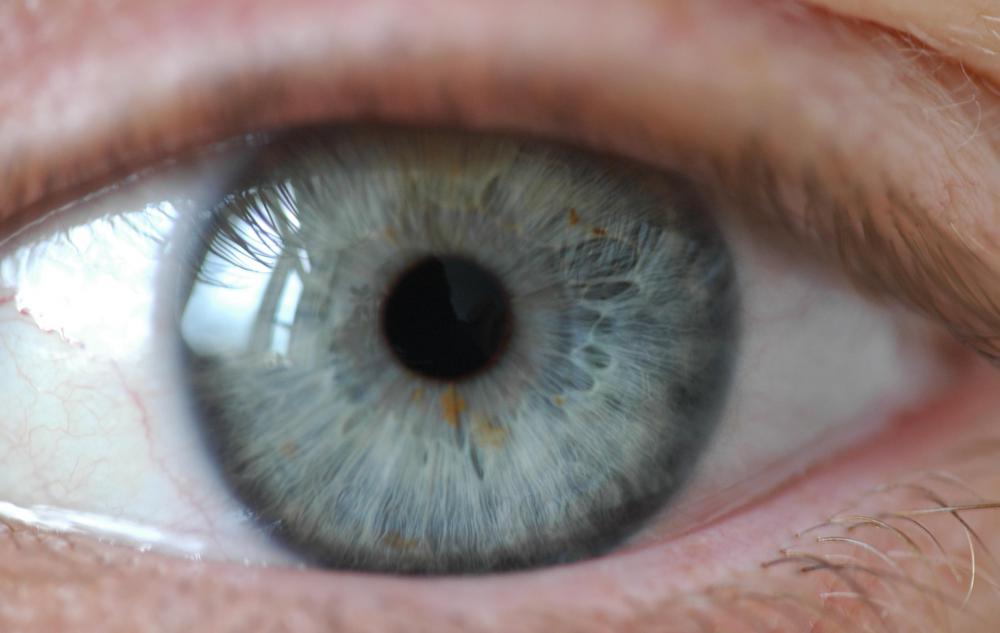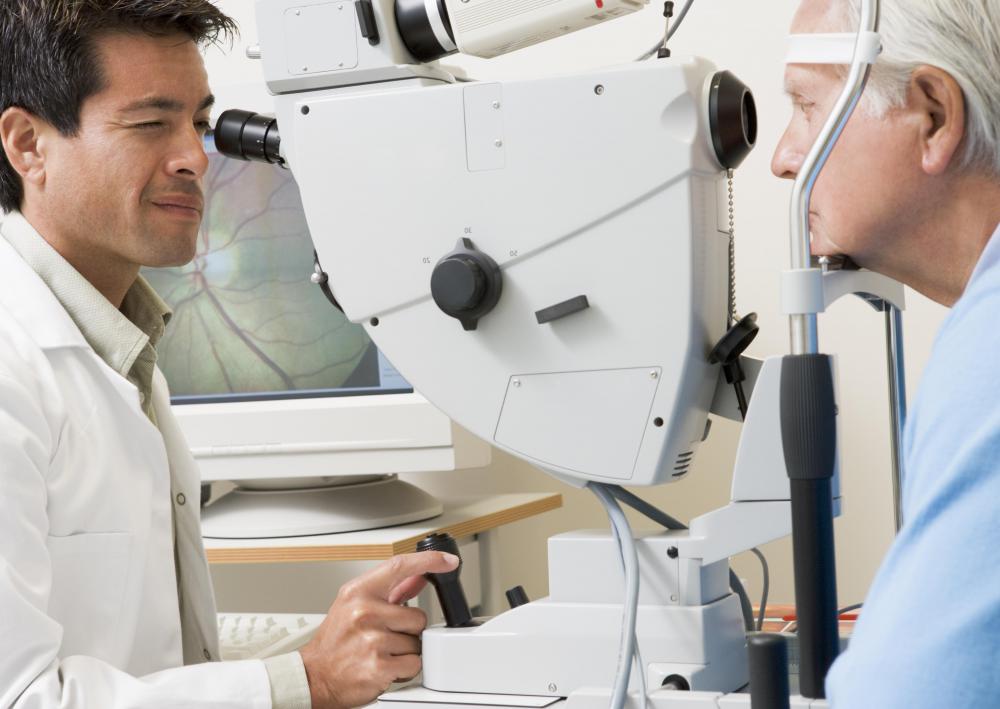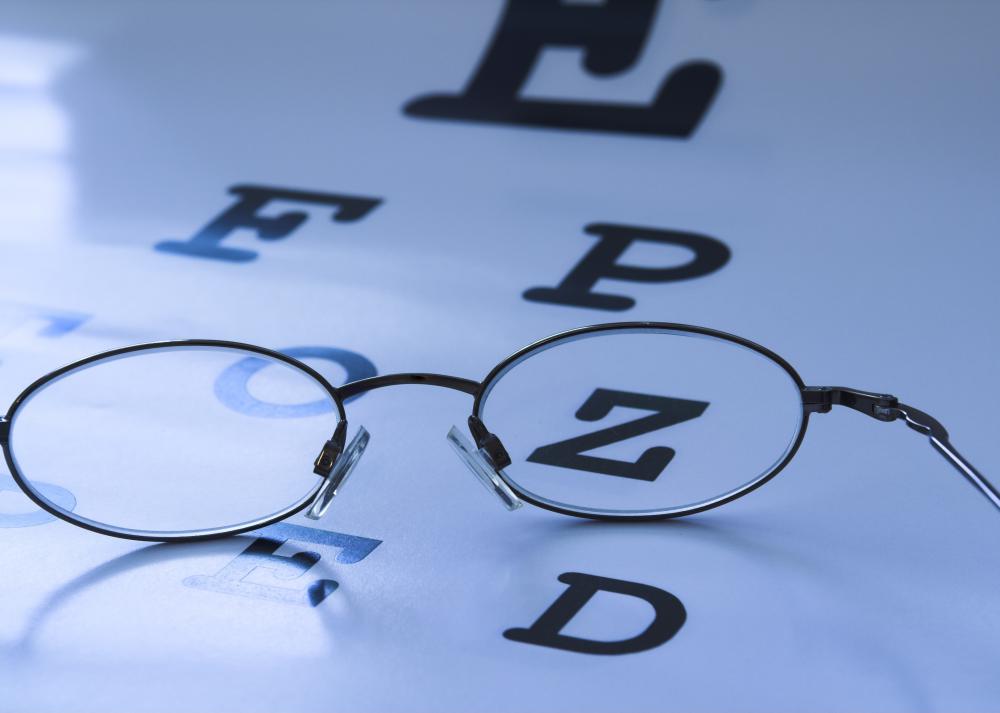At TheHealthBoard, we're committed to delivering accurate, trustworthy information. Our expert-authored content is rigorously fact-checked and sourced from credible authorities. Discover how we uphold the highest standards in providing you with reliable knowledge.
What Is Afferent Pupillary Defect?
An afferent pupillary defect is an eye condition where one eye is less sensitive to light, and will not contract as sharply in response to light as the unaffected eye. This can be a sign of optic nerve damage, tumor, glaucoma, and a number of other eye issues. A doctor can identify this defect with the swinging light test, where she moves a light rapidly back and forth between the eyes to monitor the pupillary response.
The neurological circuit that controls dilation and contraction of the pupil works simultaneously in both eyes. For instance, when a doctor shines a bright light into the left eye, the right eye will contract as well. In a patient with afferent pupillary defect, shining the light into the healthy eye will result in a tight contraction of both pupils. If the doctor moves the light rapidly to the injured eye, the pupils will appear to dilate, because the optic nerve receives less light and thinks it needs to open up the pupils for visibility.

Anisocoria, where the pupils dilate and contract at different rates, is not seen in patients with afferent pupillary defect. The pupils still respond simultaneously to stimuli, but one of the eyes is receiving confusing signals and it does not contract as much as it should in response to light. This can be seen in patients with severe vision impairments caused by a variety of ophthalmologist conditions.

Doctors must be careful in an eye exam, as the rate at which they move the light can have an impact on the outcome of the test. If the light moves too slowly, the doctor may get a false reading. In a case of suspected afferent pupillary defect, the doctor will repeat the test to confirm. This clinical sign, also known as Marcus Gunn pupil, requires further investigation to find out more about the cause. Treatments can include medication for glaucoma or surgery to remove a tumor impinging on the optic nerve.

Patients with this condition may not be aware of it prior to the examination. In bright light, the healthy eye will readily contract, pulling the pupil in the damaged eye to a small size along with it. Likewise, in dark conditions, the eyes will dilate equally. Flashing a bright light rapidly back and forth between the eyes is the only way to see the differential response, illustrating that one eye is having difficulty with the interpretation of visual information while the other is not.
AS FEATURED ON:
AS FEATURED ON:


















Discuss this Article
Post your comments